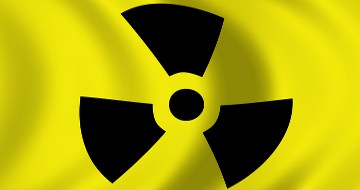
Actinium
Actinium General
| Name:Actinium | Symbol:Ac |
| Type:Transition Metal / Actinoid (Actinide) | Atomic weight:227.0278 |
| Density @ 293 K:10.07 g/cm3 | Atomic volume:22.54 cm3/mol |
|
Discovered:
by Andre Debierne in 1899. Debierne worked with Marie Curie and discovered actinium in pitchblende (uranium ore) from which radium and polonium had already been extracted. He was able to identify the presence of a new element because the radioactive emissions profile of his sample could not be explained by the presence of any known element. Debierne was unable to isolate pure actinium from the thorium also present in pitchblende. |
|
Actinium States
| State (s, l, g):solid | |
| Melting point:1323.2 K (1050 °C) | Boiling point:3471 K (3199 °C) |
Actinium Energies
| Specific heat capacity:27.2 J mol-1 K-1 | Heat of atomization:406 kJ mol-1 |
| Heat of fusion:14.2 kJ mol-1 | Heat of vaporization :400 kJ mol-1 |
| 1st ionization energy:499 kJ mol-1 | 2nd ionization energy: 1170 kJ mol-1 |
| 3rd ionization energy:kJ mol-1 | Electron affinity:kJ mol-1 |
Actinium Oxidation & Electrons
| Shells:2,8,18,32,18,9,2 | Electron configuration: [Rn] 6d1 7s2 |
| Minimum oxidation number:0 | Maximum oxidation number:3 |
| Min. common oxidation no.:0 | Max. common oxidation no.:3 |
| Electronegativity (Pauling Scale):1.1 | Polarizability volume:32.1 Å3 |
Actinium Appearance & Characteristics
| Structure:fcc: face-centered cubic | Color:silvery-white |
| Hardness:mohs | |
|
Harmful effects:
highly radioactive |
|
|
Characteristics:
radioactive, glows in the dark Uses: neutron production |
|
Actinium Reactions
| Reaction with air:mild, w/ht, ⇒ Ac2O3 | Reaction with 6 M HCl:mild, ⇒ H2, AcCl3 |
| Reaction with 15 M HNO3:mild, ⇒ Ac(NO3)3 | Reaction with 6 M NaOH: |
Actinium Compounds
| Oxide(s):Ac2O3 | Chloride(s):AcCl3 |
| Hydride(s):AcH2 |
Actinium Radius
| Atomic radius: 195 pm | Ionic radius (1+ ion): pm |
| Ionic radius (2+ ion): pm | Ionic radius (3+ ion):112 pm |
| Ionic radius (2- ion): pm | Ionic radius (1- ion): pm |
Actinium Conductivity
| Thermal conductivity:W m-1 K-1 | Electrical conductivity:S m-1 |
Actinium Abundance & Isotopes
| Abundance earth's crust: 0.0005 parts per trillion by weight | |
| Abundance solar system:negligible | |
| Cost, pure:$ per 100g | |
| Cost, bulk:$ per 100g | |
|
Source:
Natural U-235 radioactive decay. A ton of pitcheblende contains about 0.15 milligrams of actinium. Nowadays, actinium is generally produced by the neutron irradiation of 226Ra. |
|
|
Isotopes:
Actinium has 29 isotopes. All are radioactive. 227Ac occurs naturally in uranium ore and, at 21.773 years, has the longest Ac half-life. |
|
Actinium Other
|
Other:
|
|
Prev: Radium Next: Thorium |